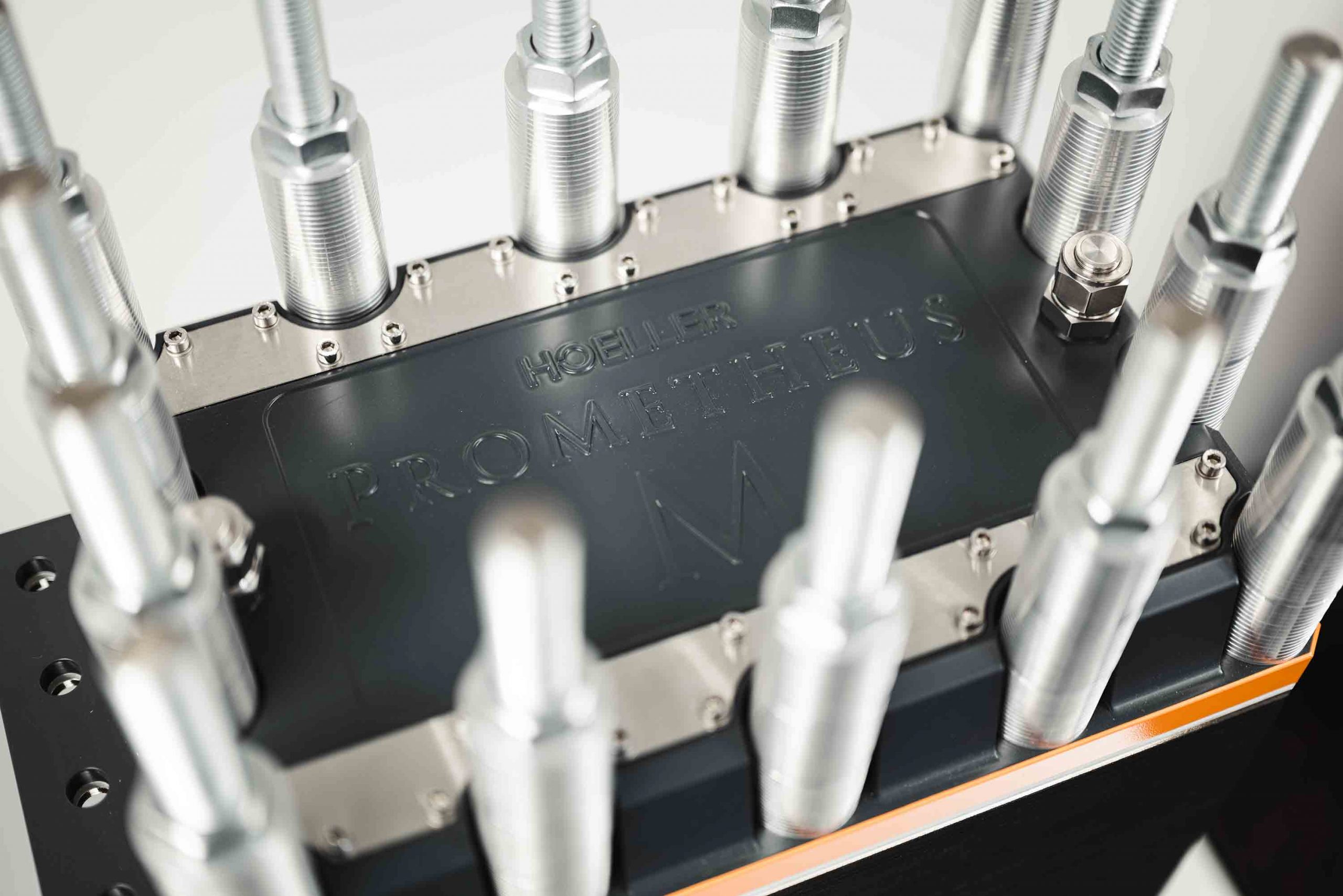HOELLER Electrolyzer GmbH was founded in 2016 by Stefan Höller to advance the efficiency and effectiveness of PEM electrolyzers. The company is focusing on the development and production of PEM electrolysis stacks. In these stacks, water is split up into hydrogen and oxygen by adding electricity. This makes them the core component of future electrolysis or power-to-x systems. Since its founding the company filed nine international patent applications.
Easy Engineering: What are the main areas of activity of the company?
HOELLER: With its innovative PEM technology, HOELLER Electrolyzer GmbH is developing the future source of green hydrogen. The innovative PEM electrolysis stack Prometheus is the result of more than 25 years of expertise and pioneering work by engineer, managing director and head of development Stefan Höller. With Prometheus, HOELLER is above all aiming to achieve convincing value for money, minimized hydrogen production costs, impressive maximum performance, outstanding service life and high hydrogen output pressure.
E.E: What’s the news for 2020 about new products?
HOELLER: HOELLER Electrolyzer GmbH will present the prototype of the innovative Prometheus S PEM electrolysis stack in Fall 2020. It will be assembled and operated at HOELLER’s premises in Wismar. In parallel to testing the prototype we will also integrate it into a pilot operation at a wind farm in Northern Germany. The final product will be available in early 2021.

E.E: What are the ranges of traded products?
HOELLER: HOELLER Electrolyzer offers its Prometheus stacks in three compact sizes and power ratings:
Prometheus S – achieves a power rating of 76 kW, produces 34 kg of hydrogen per day, and requires an area of 25 x 21 cm. It is about the size of a water carbonator. At 1,500 full load hours per year, it can produce sufficient hydrogen to power seven cars or two forklift trucks. A car can be filled up within three minutes.
Prometheus M – has a power rating of 325 kW, produces 147 kg per day, and requires an area of 42 x 29 cm and is therefore about the size of a crate of mineral water. At 1,500 full load hours per year, it can produce sufficient hydrogen to power 32 cars, seven forklift trucks or one passenger bus.
Prometheus L – has a power rating of 1.4 megawatts, produces 635 kg of hydrogen per day, requires an area of 60 x 48 cm and is therefore about the size of four crates of mineral water. At 1,500 full load hours per year, the most powerful PEM stack from HOELLER can produce sufficient hydrogen to refuel 140 cars, 30 forklifts, five buses, two trucks or half a train.
E.E: At what stage is the market where you are currently active?
HOELLER: Hydrogen has long been regarded as the ideal solution here, but has yet to make the final breakthrough, even though the principle of splitting water (electrolysis) to generate energy is nothing new. Various companies around the world are working to increase the cost-effectiveness, possible applications and efficiency of the technology to such an extent that it can be used as a clean alternative source of energy in the everyday lives of individuals and companies. Especially in the industrial sector, there is a high energy demand, which must be covered in future in a climate-neutral and cost-effective way.

E.E: What can you tell us about market trends?
HOELLER: We believe passionately that hydrogen will be a key component of the energy transition, and thus a part of our future energy infrastructure. Today, it is difficult to foresee how the individual sectors of the hydrogen economy will develop. What is clear though is that storage of renewable energy will be a vital part of these developments. And we are doing our bit with our products.
E.E: What are the most innovative products marketed?
HOELLER: No matter whether you are a wind turbine operator, hydrogen filling station, or industrial enterprise/large-scale operation with fleets of trucks and forklifts or freight trains. In future, they all will need cost-effective and reliable energy solutions.
This is precisely what Prometheus electrolysis stacks offer. They are the easy-to-integrate, cost-effective and powerful centerpiece of climate-friendly hydrogen and thus energy production for every plant manufacturer.
In addition to performance and economy, the low space requirement and reduced overall weight are decisive competitive advantages. The electrolysis stacks from HOELLER save about 25 per cent in space and weight, which also makes it possible, for example, to integrate them into the rotor head of a wind turbine.

E.E: What estimations do you have for 2020?
HOELLER: We remain optimistic about the mid-term outlook for the hydrogen industry. The first half of 2020 was a set-back to everybody in the renewable energy sector and in start-ups in particular. The European Green Deal puts a priority on hydrogen and we hope to see positive implications already in 2020. The hydrogen industry needs clarity on the regulatory framework and support to accelerate the deployment of innovative technologies. The EU also needs to address the infrastructure, such as smart grids, hydrogen networks or carbon capture, storage and utilisation, energy storage, to enable sector integration.
We also hope for the German National Hydrogen Strategy to provide stimulus and support to the industry in Germany. Today, regulations are unfavourable towards the production of green hydrogen from renewable energy sources. In light of the economic downturn in the first half of the year we would also appreciate additional funding for start-ups in the hydrogen economy.

